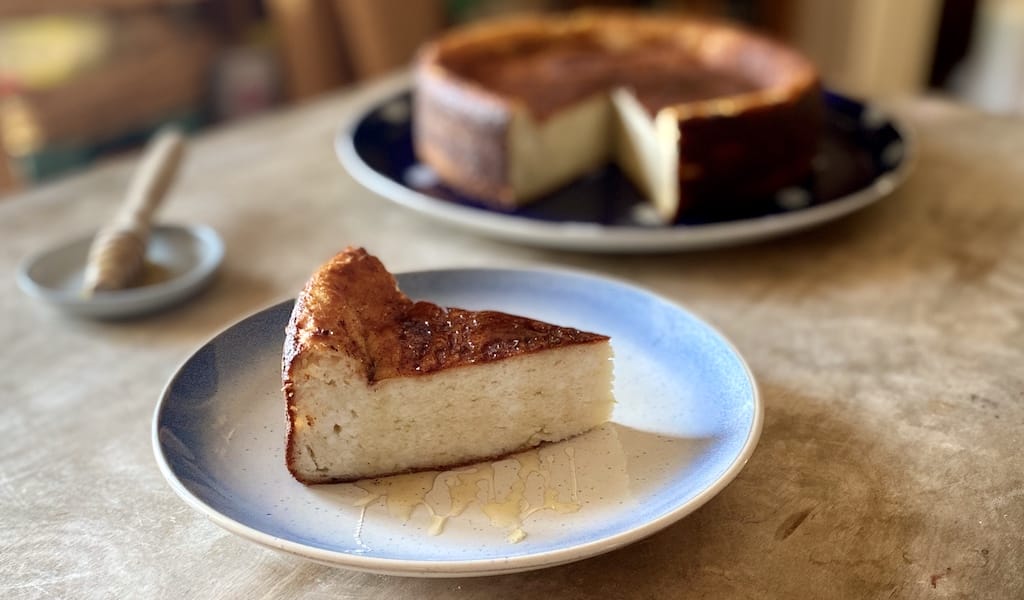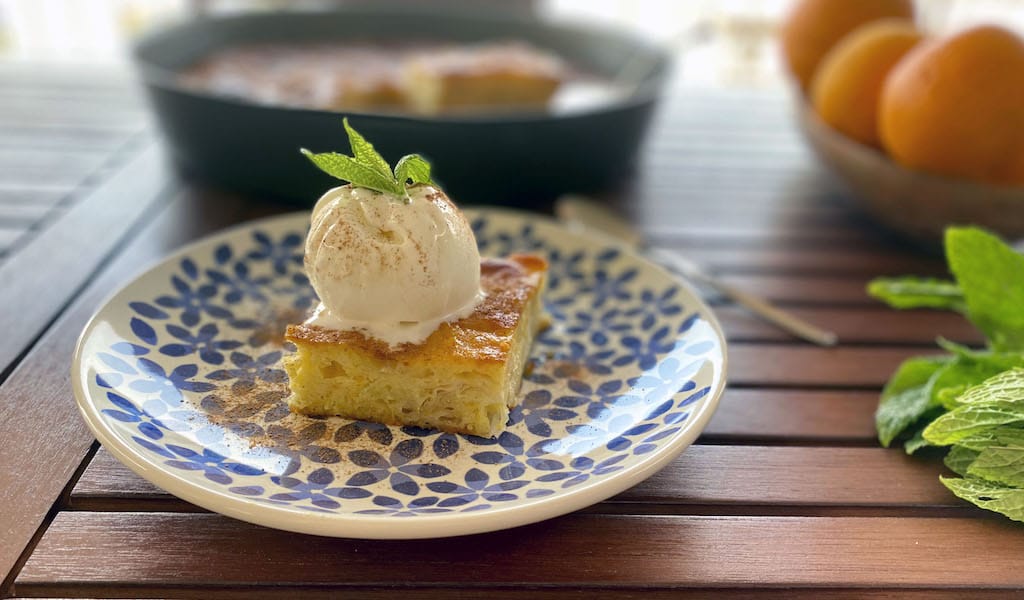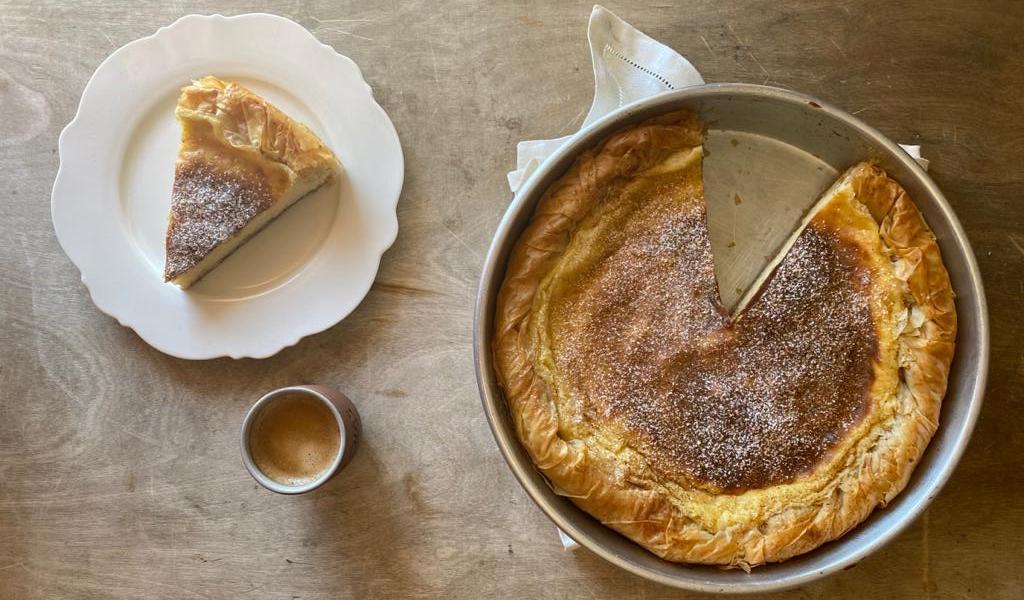Did you know that the idea of a cheesecake is centuries old? In his book Cheesecake Madness (Simon & Schuster, 1984), John Segreto writes that, according to his research, the first cheesecake was documented between 800 to 700 B.C. on the island of Samos; other scholars, having studied ancient cheese molds and other findings unearthed in Greece, argue that a form of ancient cheesecake existed in the region even before 2000 B.C.
What we know for sure is that the ancient Greeks were enamored with the combination of cheese and honey (a combination that is still popular to this day). This makes sense when you consider that honey was the main sweetener back then, a vital ingredient in both sweet and savory recipes and sauces. Dinner, which historians have identified as the most important and longest meal of the day in ancient Greece, began or ended with tragimata (τραγήματα), sweet treats like fresh or dried fruit, nuts and sesame seeds, which were often served with honey or caramelized with it. Caramelized almonds and the famous sesamis (now called pasteli, a honey and sesame bar) were both popular.
Honey was also an important ingredient in plakountas (πλακούντας), or pies, where it was often combined with cheese. These pies were made in various ways but often drawing from a short list of ingredients: a mix of wheat and water, cheese, honey, milk, eggs, raisins, nuts, herbs and spices.
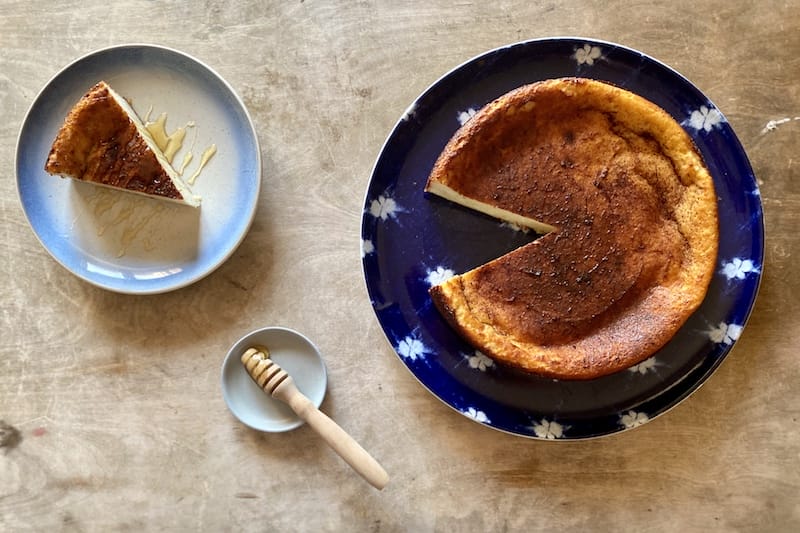
The ancient method of making cheesecake, recorded for posterity by Athineus in 230 A.D., involved first mashing the cheese and then mixing it with honey and soaked flour. The mixture was heated over the fire and then cooled down before serving. The Romans adopted the recipe, adding in eggs and calling it placenta (Latin for “flat cake,” the word took on its modern meaning when a 16th-century anatomist referred to the organ as placenta uterine, or “uterine cake”). They sometimes baked the pie in a wood-burning oven and most often served it warm, unlike the Greeks who ate it cold.
It’s essentially a simplified version of the current recipe for the traditional Greek version of cheesecake, most commonly called myzithropita. The star ingredient is myzithra, the cheese most often used in this type of cheesecake. Having been produced in Greece for thousands of years, myzithra is most often associated with Crete (although similar cheeses are prepared in many parts of Greece and especially on the Cyclades). It’s made from a mix of sheep and/or goat milk (depending on the region) and whey, with many using the whey of feta cheese, in a production process similar to that of ricotta in Italy.
There are two types of fresh myzithra: One is called xynomyzithra (“sour myzithra”) – or pichtogalo as they call it on Crete – a fantastic creamy, white, granular cheese that is slightly salty and tangy, as its name suggests, and is often used in salads, among other things. The second version, called glykia myzithra (“sweet myzithra”), is milder and not as salty, which is why it features in several desserts across Greece. There is also a type of myzithra that is aged and salt-dried, making it harder and giving it a slightly spicier and saltier flavor that resembles Italian ricotta salata.

Around Greece you will find several variations on myzithropita, some even with different names but always with fresh cheese as the base. Best known are the Cretan versions, which are commonly eaten for breakfast. These are either similar in appearance (although not preparation or flavor) to pancakes, drizzled with honey and sprinkled with cinnamon, or wrapped in a thick phyllo, dip fried and served with honey or sugar and cinnamon.
Skepasti on Tinos and melopita (“honey pie”) on Sifnos and Mykonos are more or less the same recipe: They are made with fresh cheese, eggs, sugar, flour and honey, and baked in the oven. The version I most often make is from Paros, where I grew up spending every single summer of my childhood and teenage years (although similar versions exist on other Cycladic islands). I love adding mastiha in the mix, as the traditional melitinia recipe from Santorini calls for.
If you can’t get fresh sweet myzithra cheese you can replace it with anthotyro (a similar Greek cheese), manouri mixed with a bit of yogurt to soften it up, or Italian ricotta. If you can’t get mastiha (although I recommend trying to find it at a Greek store or online) you can replace it with vanilla.
I love this cake because it’s not very sweet and can be quite refreshing (the fact that I keep it cold in the fridge certainly adds to this feeling). I particularly enjoy it for breakfast drizzled with good quality thyme honey from the island of Tinos and plenty of cinnamon, along with my large cup of morning coffee.
Myzithropita
1 ½ kg fresh myzithra cheese (or ricotta cheese)
260 gr light brown sugar
5 large eggs
Pinch of salt
1 teaspoon powdered mastiha
Zest of one unwaxed and preferably organic lemon
70 gr fine semolina
1 tsp baking powder
Butter for greasing the pan
One round cake tin around 27 cm diameter
Honey and cinnamon to serve
Preheat your oven at 170 C. Put the cheese in a large bowl and mash it with a big fork. Mix in the sugar and stir using the same fork. Beat the eggs in a separate bowl and add them into the cheese mix along with the lemon zest, mastiha and baking powder. Mix well to incorporate and finally start gradually adding the semolina, while stirring constantly. Grease the pan with butter and pour in the mix.
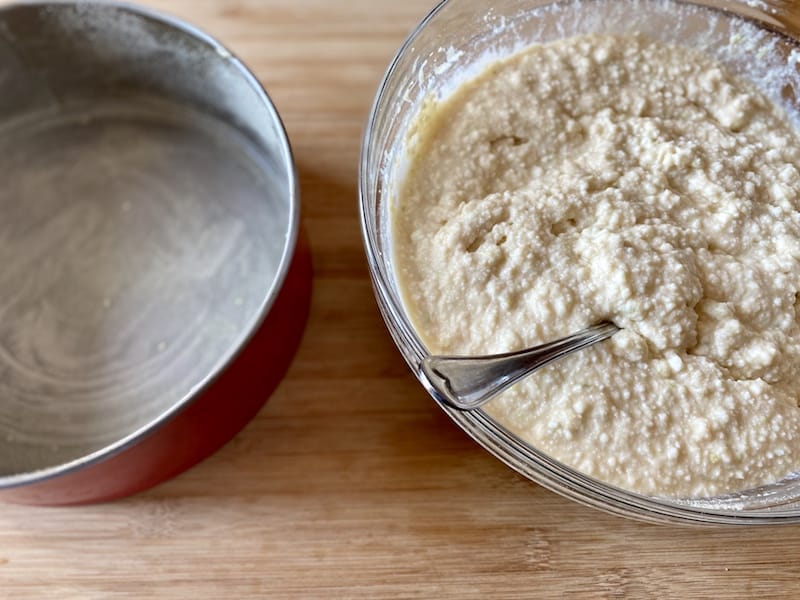
Bake on the lowest rack for about 45-60 minutes until all golden-brown on top. Take it out of the oven and allow it to cool. Once it has cooled down, remove it carefully from the cake tin and serve drizzled with honey and sprinkled with cinnamon.
To convert metric measurements to US and British kitchen units, click here.
 June 5, 2020 Recipe
June 5, 2020 Recipe
When people ask me what’s my favorite time of the year here in Athens, I always say it’s […] Posted in Athens April 23, 2020 CB Cooks
April 23, 2020 CB Cooks
Greek Easter was extraordinary – in the truest sense of the word – this year. Despite […] Posted in Athens April 2, 2024 Grandma’s Folar Recipe
April 2, 2024 Grandma’s Folar Recipe
Folar is the generic name given to traditional Easter sweet bread in Portugal. Making it […] Posted in Lisbon
Published on September 25, 2020
Related stories
June 5, 2020
AthensWhen people ask me what’s my favorite time of the year here in Athens, I always say it’s spring and particularly April. That is when all the Seville orange trees lining the streets of Athens – both downtown and in the suburbs – blossom and perfume the whole city. I can spend hours walking around…
April 23, 2020
AthensGreek Easter was extraordinary – in the truest sense of the word – this year. Despite the fantastic weather people had to stay at home to celebrate, quite a lonesome setup compared to the crowded daylong outdoor feast that we are normally used to. Despite being at home, my 7-year-old son and I did all the same…
April 2, 2024
LisbonFolar is the generic name given to traditional Easter sweet bread in Portugal. Making it from scratch is somewhat of a long process, but being confined due to the coronavirus crisis, we seem to have a bit more time on our hands than expected. My family’s folar recipe is from my grandmother Felismina, who was…







































